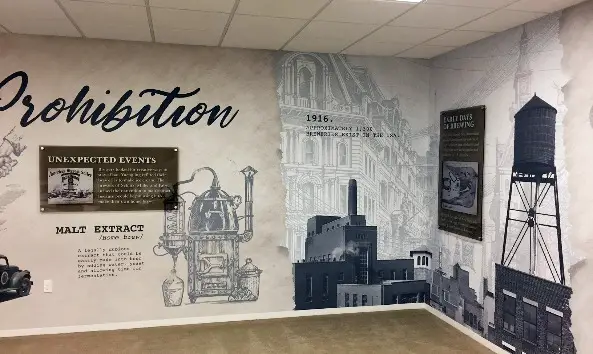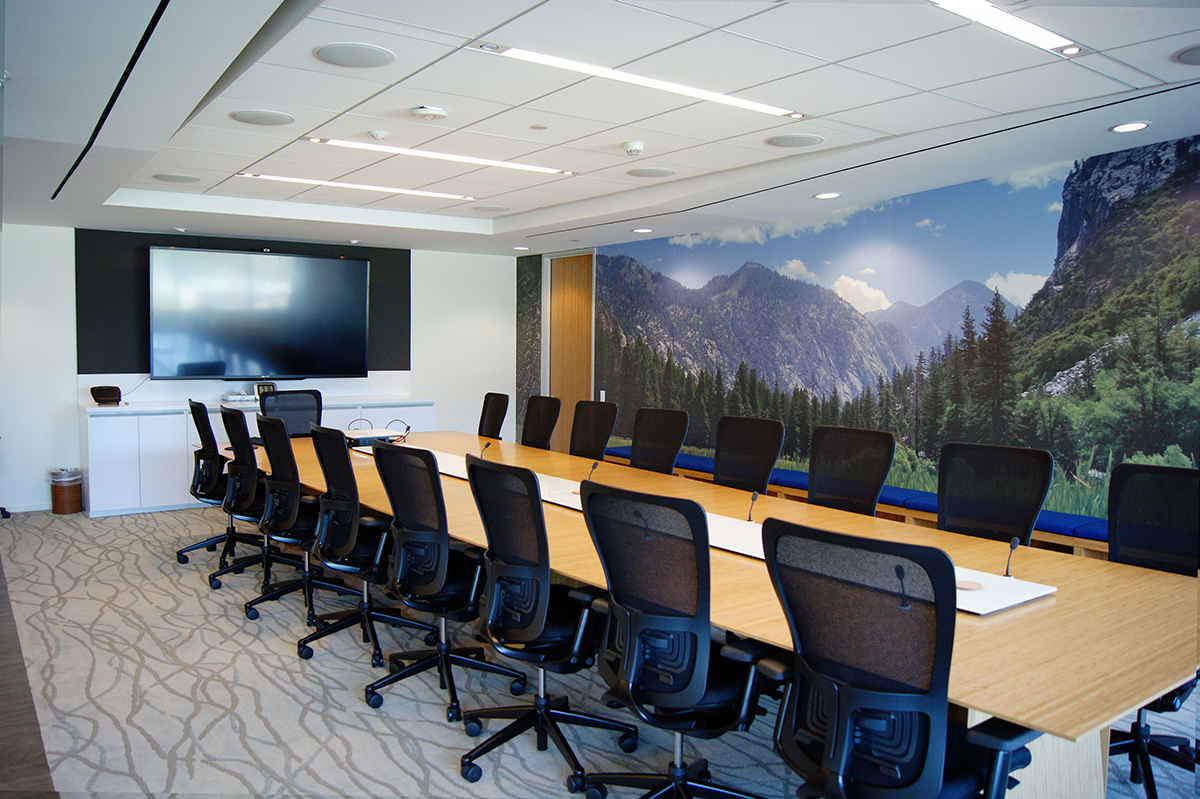
Raster vs Vector Art For Wall and Glass Graphics
What’s the difference between vector and raster art?
This is one our most frequently asked questions. Which type of artwork we use for glass and wall graphics has a significant impact on the final result, so it’s important to know the difference. While they may look similar at first glance, vector and raster art are created using vastly different techniques and offer unique advantages and limitations.

What is Vector Art?
Vector art is created using mathematical equations to create shapes, lines, and curves. These shapes are then filled with color to create the final image. Because vector art is based on mathematical equations, it can be scaled up or down without losing clarity. This makes vector art an excellent choice for creating logos, icons, and other graphics that need to be used across multiple platforms and at many sizes.
Vector art are often created in Adobe Illustrator, and can be found in these file formats:
- AI – Illustrator Files
- EPS
- SVG

What is Raster Art?
Raster art, on the other hand, is created using a grid of pixels that are colored in to create the final image. It is sometimes referred to as pixel-based artwork. The resolution of raster art is determined by the number of pixels in the image, and scaling the image up or down can result in a loss of quality. However, raster art offers more flexibility in terms of texture and color blending, making it a popular choice for digital painting and photo editing.
Photographs are the most common example of a raster artwork. The most common file formats for this type of art include:
- PSD/PSB – Photoshop Files
- TIFF
- JPEG
- PNG
So, which type of art is better for window and wall graphics? It really depends on the specific project and its requirements.

Designing for Glass and Wall Graphics with Vector Art:
Vector art is necessary for custom cut installations. Examples of this are logo decals, or custom cut lettering. For these projects, vector format is necessary to create a smooth and exact cut around the complex shapes for a crisp and professional result.
Vector art is also an excellent choice for large format prints, such as wall coverings or glass graphics that cover entire glass walls. In these cases, the artwork must scale up to 9 ft high or even larger, and vector artwork has the great advantage of perfectly maintaining its quality no matter how large it scales up to.
The disadvantage of vector art is the limitations of how complex and realistic the artwork is. Although the past decade has had many advancements in the capabilities of vector illustration software, vector art is best suited for illustrative or typographic designs. Raster art is much better suited for incorporating very complex textures or photographic elements.

Designing for Glass and Wall Graphics with Raster Art
If you want to use photography for your glass or wall art, then it will be necessary to use raster art. While design software can convert photographs into vector art, the result is a simplified illustrative version and will no longer have the realism and complexity of the original image. Raster art has the advantage of allowing for a level of complexity that vector images cannot provide. However, there are drawbacks for large format printing.
Unlike vector images, raster artwork will lose its image quality as it scales up. For smaller increases in size, this loss may be almost unnoticeable. For larger increases in size – such as for installing on a 12ft wide wall, the image quality change is more noticeable.
Despite this, it is perfectly possible to get a great final result. It’s important however to work with the highest resolution images possible. We recommend a minimum of 5000px wide x 3000px high image for any images that will be scaled up to fit an entire wall. A large image will scale up better than a small image which has fewer pixels to work with. A photo that is only 500px by 500px quickly turns into a blurry mess as it’s enlarged.
This image size is just a guideline though, photographs that are large sizes can still be of poor quality for a many reasons. Sometimes the camera was a of poor quality, or the photo was taken from far away. Therefore, it is always vital to sample the image at the scale of the final print size in order to see what the final print quality will truly be.

Should You Choose Vector or Raster Art?
In conclusion, both vector art and raster art have their own unique advantages and disadvantages. Understanding these differences can help you choose the best type of art for your specific project and achieve the desired results. With the right tools and techniques, both types of art can be used to create stunning large format wall and glass graphics.
Recent Posts
Tags
Have Questions?
Aenean imperdiet. Etiam ultricies nisi vel augue. Curabitur ullamcorper ultricies nisi. Nam eget dui. Etiam rhoncus.
